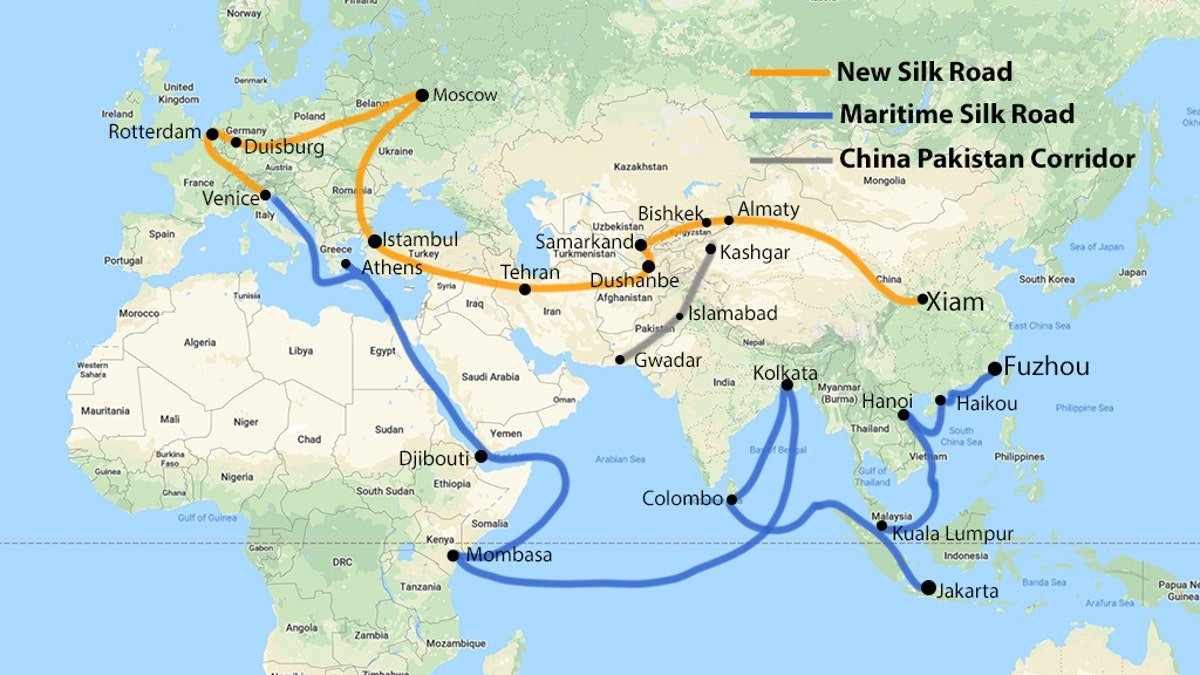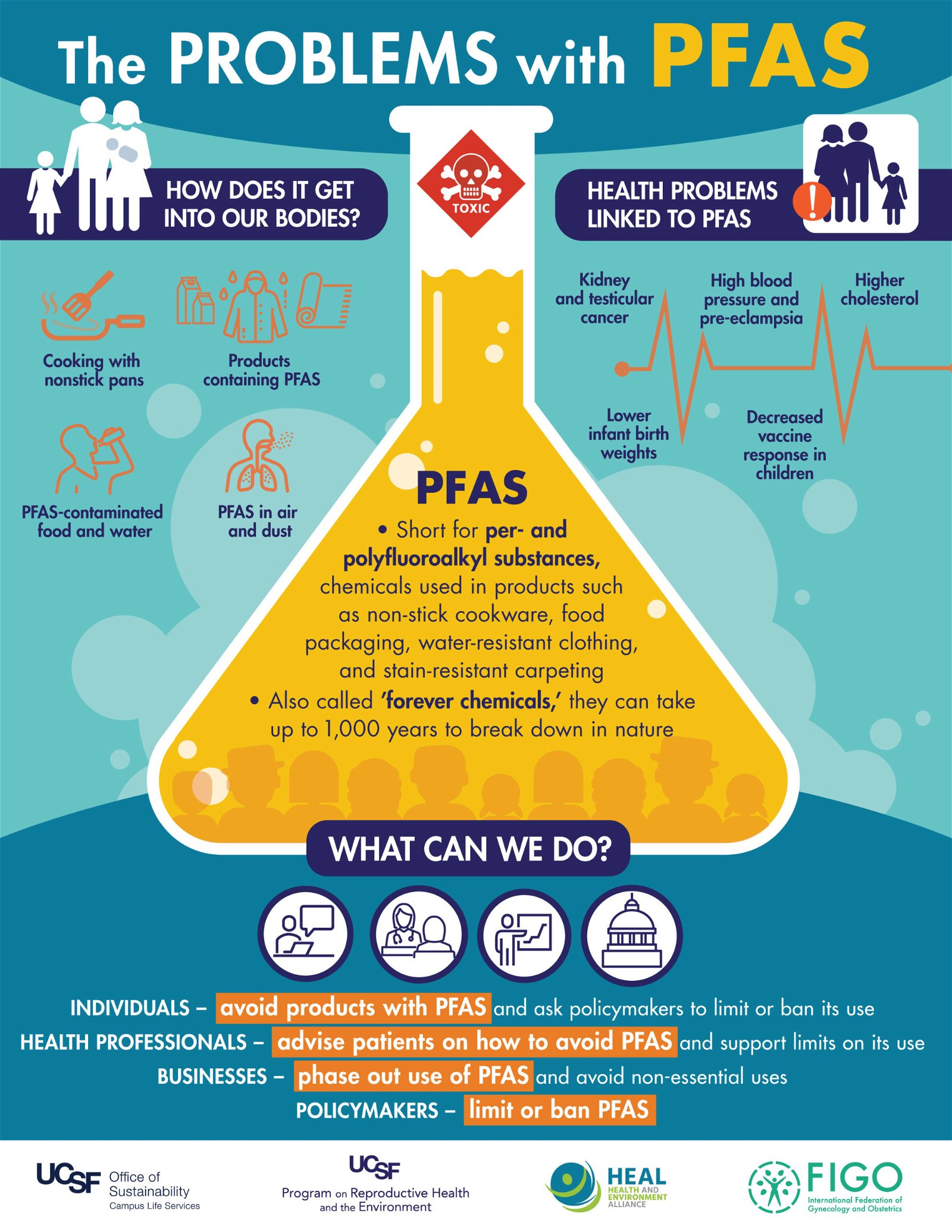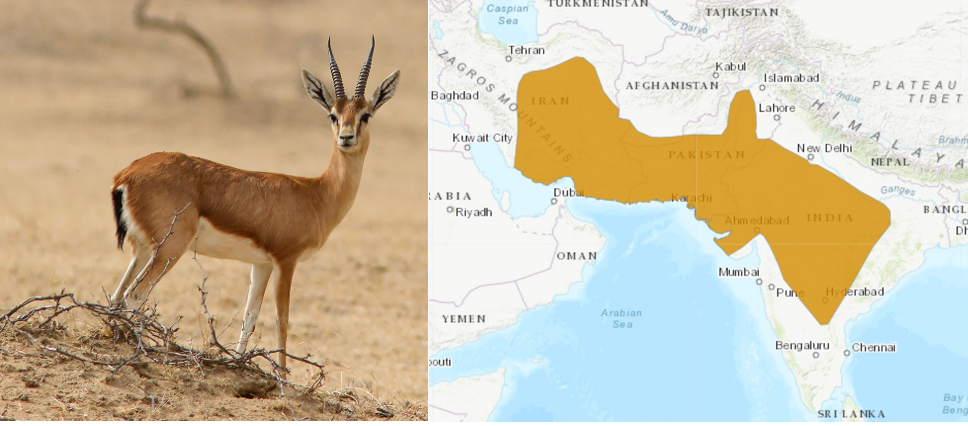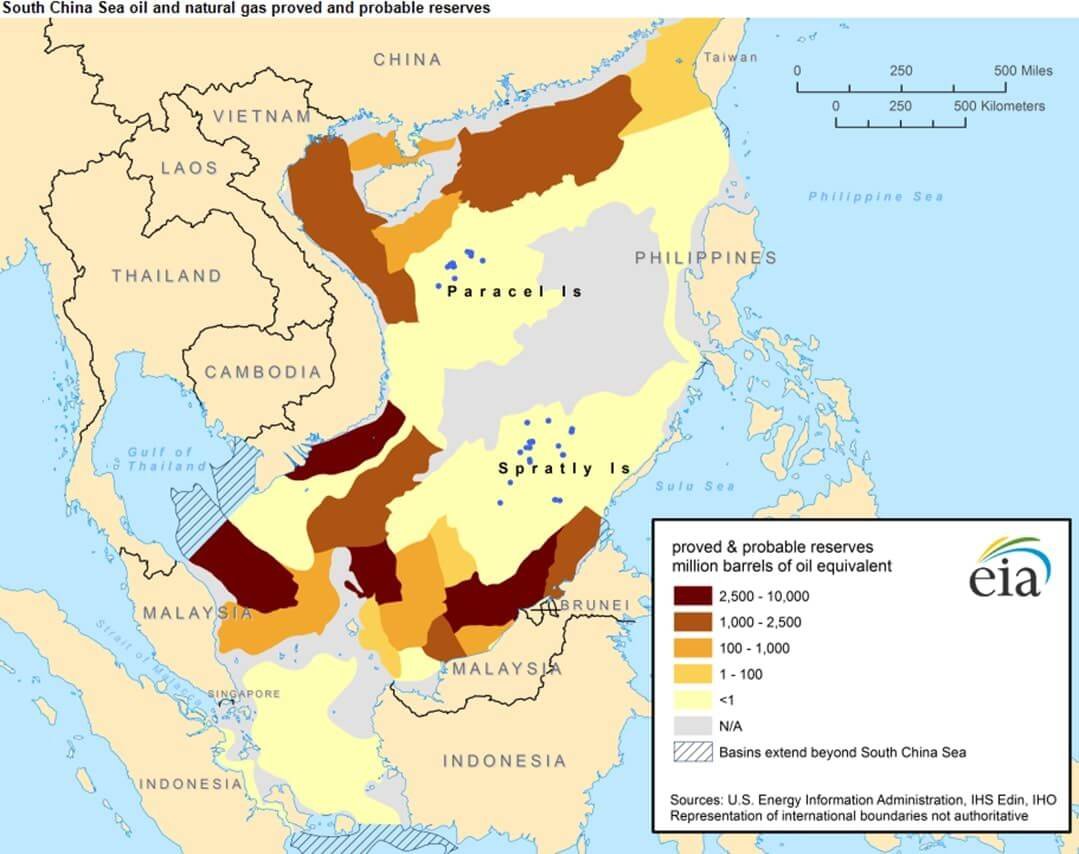
Current Affairs December 20, 2023: Goa Liberation Day, Smart Farming and Digitisation in Agriculture, Lumpy Skin Disease, Semiconductor Manufacturing in India, World Trade Organisation (WTO), Ude Desh ka Aam Nagrik (UDAN), CAMPA
Subscribers of "Current Affairs" course can Download Daily Current Affairs in PDF/DOC
Subscribe to Never Miss an Important Update! Assured Discounts on New Products!
Must Join PMF IAS Telegram Channel & PMF IAS History Telegram Channel
{GS1 – MIH – Events} Goa Liberation Day
- Context (PIB I IE): On December 19, 1961, India annexed Goa in a quick military operation after years of diplomatic efforts to secure its independence from Portugal failed.
- Swift Indian military action that lasted less than two days.

History of Goa’s Freedom Movement
- Goa became a Portuguese colony in 1510 under Admiral Afonso de Albuquerque.
- Goa started to witness an upsurge of nationalist sentiment opposed to Portugal’s colonial rule, in sync with the anti-British nationalist movement in the rest of India.
- Tristão de Bragança Cunha, the father of Goan nationalism, founded the Goa National Congress at the Calcutta session of the Indian National Congress in 1928.
- In 1946, the socialist leader Ram Manohar Lohia led a historic rally in Goa that called for civil liberties, freedom, and eventual integration with India.
- Azad Gomantak Dal (AGD): More aggressive armed struggle was needed, and peaceful methods could not win civil liberties.
What led to the delay in the liberation of Goa?
- GoI did not want to open another front in which the international community could get involved because of the following factors:
- Trauma of Partition
- Experience of War with Pakistan
- India wanted to showcase itself as a peace-abiding nation.
- Portugal being a member of NATO.
- The dichotomies within the groups fighting (Satyagraha vs Military Action) for freedom in Goa.
- Mahatma Gandhi: A lot of groundwork was still needed in Goa to raise the people’s consciousness, and the diverse political voices emerging within should be brought under a common umbrella first.
Integration of Goa into the Indian Union
- Relations between India and Portugal began amicably in 1947 after India’s independence, and diplomatic relations were established in 1949.
- Bilateral relations declined after 1950 over Portugal’s refusal to surrender its Goa, Daman and Diu enclaves and Dadra and Nagar Haveli on India’s west coast.
- Portugal changed its constitution in 1951 to claim Goa not as a colonial possession but as an overseas province.
- The move aimed to make Goa part of the newly formed North Atlantic Treaty Organisation (NATO) military alliance.
- The dictator of Portugal, Antonio de Oliveira Salazar, demanded that any military action by India be met with a NATO response.
- In 1955, the two nations had cut off diplomatic relations when thousands of satyagrahis tried to enter Goa but were fired upon by the Portuguese, resulting in 25 deaths.
|
Operation Chutney
- It was a surveillance and reconnaissance exercise.
|
Operation Vijay
- The Indian Army stationed troops around the borders of Goa, Daman and Diu.
- Military action began on December 17, and on the evening of December 19, Goa, Daman and Diu were liberated.
What made India take Military action?
|
{GS2 – IR – International Organisations} World Trade Organisation (WTO)
- Context (TH): The European Union has expressed disappointment over India’s appeal against the ruling of WTO’s dispute settlement panel in the case of duties imposed by India on ICT imports.
- WTO is an intergovernmental organization that regulates and facilitates international trade between nations, operating in a member-driven and consensus-based manner.
- Headquarters: Geneva, Switzerland; it is the world’s largest international economic organisation.
- 164 member states (India is a founding member), representing over 98% of global trade and GDP.
- Formally established on January 1, 1995, under the 1994 Marrakesh Agreement, the WTO replaced the General Agreement on Tariffs and Trade (GATT) of 1948 after the culmination of the Uruguay Round, an eight-year-long negotiation process.
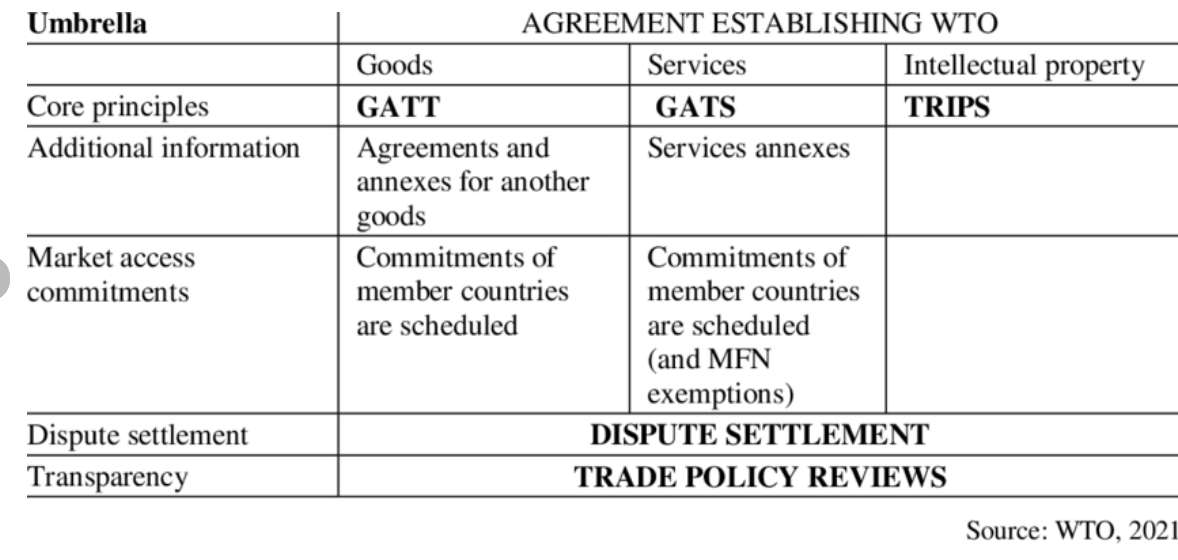
Mandate of the WTO
- The WTO’s mandate encompasses the facilitation of trade in goods, services, & intellectual property.
- It achieves this by providing a framework for negotiating trade agreements that aim to reduce or eliminate tariffs, quotas, and other trade restrictions.
- Additionally, the WTO oversees independent dispute resolution mechanisms to ensure compliance with trade agreements and resolve trade-related disputes.
- While the WTO prohibits discriminatory practices among trading partners, it allows for exceptions in cases related to environmental protection, national security, and other significant objectives.
WTO General Council
- It is the WTO’s highest-level decision-making body.
- It has representatives from all member countries.
- It has the authority to act on behalf of the Ministerial Conference (WTO’s top-most decision-making body), which meets about every two years.
- WTO General Council also meets, under different rules, as the Dispute Settlement Body (DSB) and as the Trade Policy Review Body.
Key Principles of WTO
- Most Favoured Nation (MFN): Equal treatment of all trading partners.
- National Treatment: Equal treatment of foreign and domestic goods and services.
- Fair Competition: Non-discriminatory, rule-based trading.
- Free Trade: Reduction in tariff and non-tariff barriers.
- Predictability: Transparency & binding (bound rates)
- Encouraging Development & Economic Reforms: Special assistance & concessions to developing countries & LDCs.
Relation between WTO and UN
- WTO is not a part of the United Nations. However, it has maintained strong relations with the UN.
- WTO-UN relations are governed by the “Arrangements for Effective Cooperation with other Intergovernmental Organizations-Relations Between the WTO and the UN” signed in 1995.
- The WTO Director General participates in the Chief Executive Board, the organ of coordination within the UN system.
WTO’s Dispute Settlement Body
- The Uruguay Round negotiations resulted in the adoption of the Dispute Settlement Understanding (DSU) to govern trade disputes between member states.
- Accordingly, the Dispute Settlement Body (DSB) was established in 1995 as a platform for addressing disputes between WTO members. The General Council sometimes meets as the DSB.
- The DSB possesses the authority to establish dispute settlement panels and make decisions based on their recommendations.
- DSB may also consider reports from the Appellate Body, which hears appeals from panel reports.
- Currently, the appellate body, constituting the second tier (DSB is the first tier) of the WTO’s Dispute Settlement System (DSS), remains non-functional.
Reasons for the appellate body’s non-functionality
- From 1995 to 2019, the appellate body upheld the international rule of law by holding powerful countries, such as the US and the EU, accountable for breaching international laws.
- However, its once-supportive entity, the US, has now become its most prominent critic, obstructing the appointment of its members.
US argument
- The US argues that the appellate body must consistently interpret and apply WTO agreements without establishing binding precedents.
- According to the US, creating binding precedents through appellate body decisions represents judicial overreach and exceeds its institutional mandate.
{GS2 – MoCA – Schemes} Ude Desh ka Aam Nagrik (UDAN)
- Context (PIB I TOI): Puducherry airport is excluded from the UDAN 5.0 scheme as it no longer qualifies as an ‘underserved’ airport after its weekly departure exceeds seven flights.
- The Ministry of Civil Aviation launched the UDAN Regional Connectivity Scheme (RCS) for regional airport development and regional connectivity enhancement.
- It is a part of the National Civil Aviation Policy 2016.
- The scheme is applicable for ten years.
- The Airports Authority of India (AAI) is the nodal agency for implementing the scheme.
- RCS-UDAN was awarded the Prime Minister’s Award for Excellence in Public Administration under the Innovation Category for the year 2020.
Objectives of the Scheme
- Improve air connectivity to remote and regional areas of India by expanding connectivity from unserved and underserved airports.
- Enable common people to access air travel with affordable rates, specifically targeting tier-2 and tier-3 cities.
Components of the Scheme
- It has two components:
- To improve the existing airports and develop new ones (developing Brownfield and Greenfield airports) for faster regional connectivity.
- Addition of new, capped airfare and financially viable regional air routes.
|
Features
- RCS-UDAN is a market-driven scheme. Interested airlines, based on their assessment of demand on particular routes, submit proposals at the time of bidding.
- Nearly half of the seats in Udan flights are offered at subsidised fares, and the participating carriers are provided with a certain amount of viability gap funding (VGF).
- Applicable on flights of 200 km to 800 km distance.
- Hilly, Remote Islands, and security-sensitive regions have no distance limit.
- The Regional Connectivity Fund (RCF) was created to meet the VGF requirements under the scheme.
- The partner State Governments (other than UTs and NER states where the contribution will be 10%) would contribute a 20% share to this fund.
|
- UDAN created a framework based on the need and led to the formulation of:
- Lifeline UDAN (for transportation of medical cargo during the pandemic).
- Krishi UDAN (value realisation of agriculture products, especially in Northeastern Region {NER} and tribal districts).
- International UDAN routes for NER to explore International Connectivity from/to Guwahati and Imphal.
Funding for the UDAN Scheme
Central Government
- Viability Gap Funding (VGF) to the airlines to subsidise the fair cost.
- Concession on ticket-related taxes.
- Flight’s code sharing.
State Government
- Reducing the GST to 1%.
- Improving fueling infrastructure by coordinating with oil companies.
- 20 % VGF.
- Providing free security personnel and land for airport development.
- Supplying water, electricity, etc., at cheap rates.
Airport Operators
- No charge for parking, landing, storage, etc.
- Nil Terminal Navigation Landing Charge.
- 4% discount on UDAN-RCS flight’s Route Navigation and Facilitation Charge (RNFC).
Achievements under the UDAN Scheme?
(As per the data released in Aug 2022 by the Ministry of Civil Aviation)
- The number of operational airports has increased to 141 from 74 in 2014.
- 517 routes connecting 76 airports, including 9 Heliports and 2 Water Aerodromes, have so far commenced operations.
- With 425 new routes initiated, UDAN has provided air connectivity to more than 29 States/ UTs.
- More than one crore passengers have availed themselves of the benefits of this scheme.
Challenges to the RCS Scheme
Commercial Viability
- Airport development under RCS involved launching 479 routes to revive under-utilized airports. However, out of these, 225 routes have ceased operations.
- The low demand for air travel on specific routes makes it difficult for airlines to operate profitably, even with subsidies provided under UDAN.
- Adverse and unpredictable weather conditions lead to inconsistent operations.
Infrastructural Constraints
- The inadequate airport infrastructure in some remote regions poses airline challenges.
- Many airports require upgrades and improvements to meet safety standards and handle increased air traffic.
Subsidisation of Air Travel
- The RCS aimed to make air travel affordable by providing subsidies and VGF. However, the scheme faced issues as some routes were found to be commercially unviable despite the subsidies.
High Operating Costs
- Airlines operating in remote areas often face higher operating costs, including increased fuel expenses, maintenance costs, and logistical challenges, affecting their profitability.
Airfare Caps
- The cap on airfares for RCS flights can impact the revenue potential of airlines, especially when operational costs are high. It may discourage airlines from operating on specific routes.
Passenger Awareness
- Lack of awareness among potential passengers about the availability of air travel options under UDAN can limit demand and utilisation of regional air services.
Market-driven scheme
- UDAN is a market-driven scheme, making it incumbent on the GOI to make the routes far more lucrative for airline operators.
Recent changes under UDAN 5.0
- It focuses on Category-2 (20-80 seats) and Category-3 (>80 seats) aircraft.
- No restriction on the distance between the flight’s origin and destination.
- VGF will be capped at 600 km stage length for priority and non-priority areas; earlier, it was capped at 500 km.
- The same route would not be awarded to a single airline more than once, whether in a different or the same network.
- Airlines would be required to commence operations within four months of the route award; this deadline was six months earlier.
- Novation process for routes from one operator to another has been simplified and incentivised.
|
Way Forward / Suggestions
- Enhancing airport infrastructure, streamlining subsidy disbursal, addressing operational constraints, and promoting regional air travel awareness need attention to ensure the success of RCS.
- Taxes on fuel need to be reduced, which has been a demand in the industry for a long time.
- Developing a competitive and viable regional aviation ecosystem is critical to support the orderly growth of Indian aviation.
{GS3 – Envi – Conservation} Indigenous Peoples and Local Communities (IPLCs)
- Context (DTE): The importance of Indigenous Peoples and Local Communities (IPLCs) in conservation and the need to share benefits from biodiversity with them has been earmarked repeatedly.
- Indigenous peoples and local communities (IPLCs) refer to distinct groups of people with deep historical connections to specific territories or regions.
- These groups possess distinct cultural, social, economic, and political systems intricately linked to their ancestral lands.
Importance of IPLCs in Conservation
- They deeply understand the local ecosystems and the intricate web of life that supports them.
- They possess a wealth of traditional knowledge about sustainable resource management, passed down through generations.
- They act as natural guardians of biodiversity by protecting against deforestation, poaching, etc.
Challenges in the Engagement of IPLCs in Conservation
- Historical marginalisation and distrust: IPLCs, marginalised and dispossessed by governments and conservation groups, harbour deep distrust of outsiders.
- Top-down conservation approaches: In this approach, governments and organisations set the agenda and tell IPLCs what to do. This disempowers IPLCs, fostering resentment and resistance.
- Lack of recognition of IPLCs’ rights and knowledge
- Lack of funding and resources
- Language barriers
Recognition of the Role of IPLC
- Convention on Biological Diversity (CBD): It mandates that each country respects, preserves, and maintains the knowledge, innovations and practices of IPLCs.
- Languages of IPLCs: A Working Group of CBD has emphasised the need to safeguard the languages of IPLCs for the intergenerational transmission of traditional knowledge, innovations, and practices.
- Kunming-Montreal Global Biodiversity Framework (KMGBF): KMGBF aims to safeguard biodiversity, promote sustainable use, and ensure equitable sharing of benefits with IPLC.
- Global Biodiversity Framework Fund (GBFF): Global Environment Facility (GEF) allocates up to 20% of the new GBFF funds for IPLCs.
Convention on Biological Diversity (CBD),1992
|
Kunming-Montreal Global Biodiversity Framework (KMGBF)
|
Global Biodiversity Framework Fund (GBFF)
Global Environment Facility (GEF)
|
{GS3 – Envi – Laws} CAMPA
- Context (PIB): State/UT Compensatory Afforestation Fund Management and Planning Authority (CAMPA) have been advised to prepare their perspective plan to strengthen efforts to conserve and improve forest and wildlife habitats in the country.
About CAMPA
- The SC established CAMPA in 2002 as the National Advisory Council for monitoring, technical assistance and evaluation of compensatory afforestation activities and administering Compensatory Afforestation Fund (CAF).
- CAMPA promotes afforestation and regeneration activities to compensate for forest land diverted to non-forest uses.
|
Compensatory Afforestation Fund
- The centre passed the CAF Act in 2016, and the rules were notified in 2018.
- The National CAF under the Public Account of India and the State CAF under the Public Account of each state were created.
- The CAF Act was enacted to manage the funds collected for compensatory afforestation, driven by the ad hoc CAMPA.
- 90% of the CAF money will be given to the states, while the Centre will retain 10%.
- The funds can be used for
- Treatment of catchment areas,
- Assisted natural generation,
- Forest management,
- Wildlife protection and management,
- Relocation of villages from protected areas,
- Managing human-wildlife conflicts,
- Training and awareness generation,
- Supply of wood-saving devices and allied activities.
|
Problems with Compensatory Afforestation
- Greenwashing: According to some experts, compensatory afforestation has legitimised the clearing of forests, and they see it as an example of ‘greenwashing’.
|
- Low Utilization of Funds: The money collected for compensatory afforestation before 2016 has remained unutilised. Serious work on compensatory afforestation has begun only after the 2016 Act.
- No Availability of Land: Suitable land remains the biggest problem for compensatory afforestation.
- The land made available for afforestation usually cannot be used for any other purpose and is often highly unsuitable for growing plantations.
- Monoculture Plantations: Often, the plantations are monocultures, meaning they contain only one species of plants. There is a lack of biodiversity.
- There is also biotic pressure, referring to the challenge the plantations face from nearby human habitations and cattle.
- CAMPA-funded projects endangered landscape connectivity and “biodiversity corridors” and exposed forest patches to “edge effects”.
|
- Reduced View of Forests: According to some experts, the concept of compensatory afforestation works for the benefit of the biggest polluters on the planet.
|
- Parliamentary Standing Committee on Science and Technology, Environment and Forests (PSC) Report: The CAF Act 2016 has no time frame for creating compensatory forests and is highly bureaucratic.
- The Intergovernmental Panel on Climate Change (IPCC): In its Synthesis Report,IPCC, raised concerns about the ongoing policy of Afforestation in India that allows forests to be cut down and replaced elsewhere.
Afforestation and Reforestation Programmes in India
- National Mission for a Green India: One of the eight Missions under the National Action Plan on Climate Change. It aims to protect, restore and enhance India’s forest cover and respond to Climate Change.
- National Afforestation Programme (NAP) Scheme: The objective of this scheme is the ecological restoration of degraded forests and forest resources with people’s participation.
- National Forest Policy (NFP), 1988: It encourages the plantation of trees alongside roads, railway lines, rivers, streams, canals, etc., under social forestry.
{GS3 – Envi – Species} Oil Spill Threatening Pelicans and Painted Storks
- Context (TNIE): There are sightings of ‘black’ oil-drenched pelicans and painted storks in Chennai.
|
Spot-Billed Pelican (Pelecanus philippensis)
- Spot-billed pelican or Grey pelican is a large water bird.
- Distribution: Indian subcontinent and SE Asia.
- Habitat: a variety of wetlands, both freshwater and saline. It breeds colonially in Acacia bushes.
- Threats: Habitat loss, hunting, invasive species and diseases.
- Conservation status: IUCN: NT | WPA: Schedule IV

Painted Stork (Mycteria leucocephala)
- Painted stork is a shorebird.
- Distribution: endemic to the Indian subcontinent and Southeast Asia.
- Habitat: freshwater marshes, lakes, flooded fields, irrigation canals, rivers, etc.
- Threats: Habitat loss, hunting, pollution, invasive species and diseases.
- Conservation status: IUCN: NT
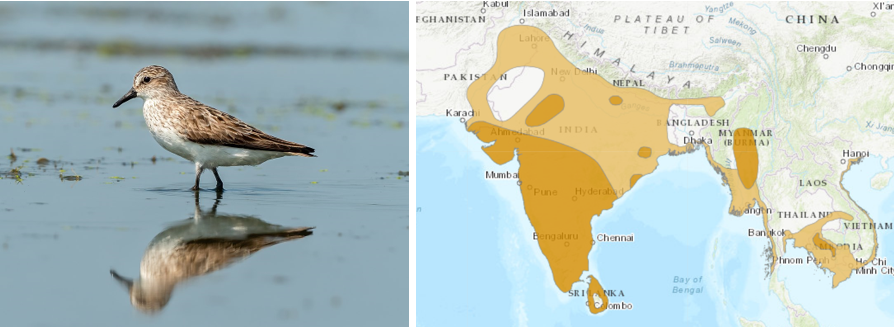
{GS3 – IE – Industry} Semiconductor Manufacturing in India
- Context (LM): India is considering ₹10,000 crore revised scheme for local chip manufacturing.
What is a Semiconductor?
- It is a material, composed of Silicon, Germanium etc., that fits between a conductor (full conductivity) and an insulator (no conductivity), designed to manage and control the flow of current in electronic devices and equipment.
- Global major producers: Taiwan, South Korea, Japan, USA, and China.
- Semiconductors Market in India: $25 billion; projected to reach $80 billion by 2028.
Significance of domestic manufacturing of semiconductors
- Technological Sovereignty: For e.g. concentrating chip production in a few countries can lead to a ‘Malaccan Dilemma’ kind of crisis for India.
- Key to net zero carbon emissions target: Semiconductor chips are key components in green technologies like EVs, solar panels, turbines, LEDs, etc.
- Insulation from Global Supply Chain Shocks: The concentration of chip manufacturing in a few countries makes India vulnerable to global shocks like the US-China trade war, the COVID-19 pandemic, etc.
- Positive spillover effect in the health sector (AI/ML Tools performing complex surgeries), Space sector (Satellite, Launch Vehicles, Deep space probes), etc.
- National security: by reducing dependence on imported semiconductors, safeguarding critical infrastructure, defense systems, and sensitive data from vulnerabilities.
- Essential component for advanced technologies like AI, Quantum computing, Blockchain applications, 5G, IoT, Self-driven vehicles, Drones, etc.
- Stable forex reserves: It will help India boost export earnings by tapping the global market and save huge Forex, thus narrowing the trade deficit.
|
Challenges in making India a Semiconductor hub
- Highly capital-intensive: The manufacturer has to maintain a large volume production facility to support volume orders, which will result in very high investment in the beginning.
- High maintenance and infra dependency: Requirement of high-quality supply of pure water, uninterrupted electricity, etc.
- Lack of highly skilled labor and technology
- Scarcity of raw materials: From a value-chain perspective, its production needs silicon, Germanium and Gallium arsenide, and Silicon carbide which are not available in India and needs to be imported.
- Adverse effect on environment: Use of toxic materials in the fabrication process such as arsenic, antimony, and phosphorous, along with high global warming potential fluorinated compounds.
Way Forward
- Making available sustainable logistics and infrastructure required for a modern Fabrication plant, with swift transportation, uninterrupted electricity, etc.
- Industry and academia collaboration: Promotion of a start-up culture among faculty and students in higher educational institutes through initial capital and mentoring. For eg. Semiconductor Startup Incubation and Acceleration Program (SSIAP) at IIT Hyderabad.
- ‘Friend Shoring’ for a secure supply of inputs (For eg. QUAD, South Korea, Taiwan, etc).
- Strategic framework covering the entire chip-making value chain i.e. design centers, testing facilities, packaging, etc. Legislative backing to policy on lines of USA & EU Chips Act.
- Other Measures: Facilitative tax & IPR regime, Industrial clusters, funding across the value chain, etc.
GoI Initiatives for semiconductor manufacturing
- Production Linked Incentive scheme (PLI)
- Chips to Startup (C2S) Programme to train high-quality engineers.
- Modified Special Incentive Package Scheme (M-SIPS) for Semiconductors.
- Digital RISC-V (DIR-V) program for the production of microprocessors.
{GS3 – MoA&FW – Initiatives} Smart Farming and Digitisation in Agriculture
- Context (PIB): GoI promotes the adoption of smart farming methods through technology and innovation in the country’s agricultural sector.
|
Why is Smart Farming and Digitisation in Agriculture Important for India?
Boost Productivity and Yield
- Precision agriculture: Smart farming enables precise monitoring of soil health, water usage, nutrient levels, etc., leading to higher productivity.
- Improve resource efficiency: Smart irrigation systems like drip and sprinkler methods significantly reduce water waste, a crucial issue in water-scarce regions of India.
- Early pest and disease detection
Enhancing Farmer Livelihoods and Profitability
- Reduced costs and labour: E.g. automated tasks like precision irrigation reduce labour requirements.
- Improved market access: Digital platforms like eNAM connect farmers directly to buyers, eliminating middlemen and improving price transparency and returns.
- Enhanced resilience and climate adaptation: Weather forecast apps help farmers to cope with droughts and floods.
Promoting Sustainability and Environmental Protection
- Reduced water and chemical use: Micro irrigation minimises water waste, and soil health cards optimise fertiliser and pesticide application.
- Carbon footprint reduction: Optimised utilisation of agri-resources can lower greenhouse gas emissions from agricultural activities. For e.g., reduced fertiliser production.
Addressing Specific Challenges of Indian Agriculture
- Small landholdings: Smart farming offers solutions for small farms, helping them maximise limited resources and improve land use efficiency. E.g., vertical farming.
- Skill gap and digital divide: Training programmes and affordable technology solutions will equip traditional farmers with the necessary skills and knowledge. E.g., Krishi Vigyan Kendras.
Initiatives by GoI for Smart Farming and Digitisation in Agriculture
National e-Governance Plan in Agriculture (NeGPA) Programme
- NeGPA was launched in 2010-11 to utilise information and communication technologies (ICT) to provide information and services to the farming community, private sectors, and stakeholders.
- It funds State Governments for Digital Agriculture Projects using technologies like Artificial Intelligence, Machine Learning, the Internet of Things (IoT), blockchain, etc.
National Agriculture Market (e-NAM)
- e-NAM is a pan-India electronic trading portal that networks the existing Agricultural Produce Market Committee (APMC) mandis to create a unified national market for agricultural commodities.
- Digital services are provided to traders, farmers, farmers’ producer organisations (FPOs), and mandis.
PM KISAN Scheme
- Under the PM KISAN Scheme, the fund is directly transferred into the bank accounts of the eligible farmers under the Direct Benefit Transfer mode.
- PM-KISAN Mobile App was launched to broaden the reach of the scheme.
Integrated Scheme for Agricultural Marketing (AGMARKNET)
- AGMARKNET supports the development of agricultural marketing infrastructure by offering backend subsidy support to state, cooperative, and private sector investments.
- Services are delivered through the AGMARKNET, a G2C e-governance portal serving farmers, industry, policymakers, and academic institutions.
Mission for Integrated Development of Horticulture (MIDH)
- The HORTNET project is a web-enabled system for providing financial assistance under MIDH.
- It helps in online application filing and payment to the beneficiary’s bank account through DBT.
National Project on Soil Health and Fertility
- It issues soil health cards to farmers to address nutrient deficiencies in fertilisation practices.
- The Soil Health Card Portal allows farmers to track soil samples.
Kisan Suvidha App
- It facilitates the dissemination of information to farmers on the critical parameters viz., weather, market prices, plant protection, input dealers (seed, pesticide, fertiliser), farm machinery, soil health card, cold storages & godowns, veterinary centres, and diagnostic labs.
Indian Council of Agriculture Research (ICAR) Apps
- ICAR developed 187 mobile apps for farm and farmer-related services during 2014-21.
- These ICAR apps are now integrated into one common platform called KISAAN.
Krishi Vigyan Kendras (KVKs)
- The Indian Council of Agricultural Research implements the KVKs scheme in different states.
- It supports farmers in adopting innovative farming techniques developed by National Agricultural Research Systems.
AgriStack
- AgriStack is a collection of digital databases and technologies for farmers.
- It is a ‘Unified Farmer Service Interface’.
Unified Farmer Service Platform (UFSP)
- UFSP combines core infrastructure, data, applications, and tools that enable seamless interoperability of various public and private IT systems in the agriculture ecosystem.
- It is envisaged to act as a central agency in the agri ecosystem (like UPI in the e-payments).
Challenges in the Implementation of Smart Farming and Digitisation in Agriculture
- Technological barriers: These include high technology costs, lack of infrastructure access, and maintenance and support issues.
- Human and social factors: These include poor digital literacy and awareness, resistance to change, land fragmentation, and social inequality.
- Economic and policy Issues: These include the lack of financial incentives, policy and regulatory gaps, and market constraints (like limited access to markets and fair pricing mechanisms).
- Environmental challenges: These include climate change and E-waste management.
Way Ahead
- Proper government intervention: Providing financial subsidies, promoting rural infrastructure development, and offering training programmes for digital literacy and smart farming skills.
- Private sector collaboration: Affordable technology solutions, financing models, and partnerships with local communities can drive innovation and accessibility.
- Community-based initiatives: Farmer networks, knowledge-sharing platforms, and peer-to-peer learning can address concerns about adoption and use.
- Education and awareness campaigns
Other Initiatives Taken by GoI for Development of AgricultureSub-Mission on Agricultural Mechanization (SMAM)
Agriculture Infrastructure Fund (AIF)
Rashtriya Krishi Vikas Yojana (RKVY-RAFTAAR)
Per Drop More Crop (PDMC)
|
{Prelims – Sci – Bio – Disease} Lumpy Skin Disease
- Context (IE): The parliamentary panel flags discrepancies in GoI’s report on lumpy skin disease deaths.
- It is caused by the lumpy skin disease virus (LSDV), which belongs to the Capripoxvirus genus.
- It was 1st discovered in Zambia in 1929, subsequently spreading to African countries. Currently, it is prevalent in Africa, the Middle East, and some parts of Asia.
- It is a contagious vector-borne disease spread by vectors like mosquitoes, biting flies and ticks.
- It is not a zoonotic disease, meaning it cannot transmit from animals to humans.
- Symptoms include fever, nodules or lumps on the skin, and lesions on mucous membranes. Other signs may include reduced milk production, weight loss, and general weakness.
- Treatment: No treatment is available, can be prevented by vaccination.





![PMF IAS Environment for UPSC 2022-23 [paperback] PMF IAS [Nov 30, 2021]…](https://pmfias.b-cdn.net/wp-content/uploads/2024/04/pmfiasenvironmentforupsc2022-23paperbackpmfiasnov302021.jpg)




